By Athena Constantinou, APC Sports Consulting Ltd
The Athlete Vulnerability Issue
Athletes are amongst the most financially vulnerable persons of our times and the statistics globally support this claim. There are various factors contributing to the financial vulnerability of athletes:
- Athletes earn substantial amounts of income but within the limits of a short time span, usually 10 to 15 years. The average annual salary of an athlete can be anywhere from 50 to 100 times more that the average household income both in the US and Europe. The end of the athlete’s field play usually marks the end of the substantial earnings both from field play and from other sources such as image rights exploitation, endorsements, etc.
- Athletes’ earnings are extremely volatile. Most of the times athletes’ salaries are not fully guaranteed and, in addition, poor performance, injury, on and off field behavior can adversely affect their earnings capacity.
- Athletes earn their money at a very young age. Athletes’ earnings peak at the age of 25 to 30 and then take a huge plunge by the age of 35, as opposed to the rest of the normal work force who reach peak earnings between ages 39 to 55. A lot of athletes leave their home countries at a very young age and they tend to overspend to compensate for things that are missing in their lives such as family and friends.
The Statistics
The statistics in connection with how athletes do financially after retirement are compelling and the magnitude of the problem is obvious.
- Despite their high professional athlete salaries, within 5 years past their retirement, 60% of former NBA players have gone bankrupt or are under financial distress.
- Approximately 25% of NFL players report financial difficulties in the first year after retirement and within two years removed from their last game, 78% of all NFL players are divorced, bankrupt, or remain unemployed.
- Research by XPro, a charity for ex-players, suggests that three out of five UK Premier League players, who earn an average of STG 30,000 per week, declare bankruptcy within five years from retirement.
- In Australia, the Professional Footballers Association in its Retired and Transitioned Players Report of 2015, finds that 12% of retired players are unsatisfied with their current financial situation, 18,8% report that football had a negative financial impact on them and 1 out of 3, report that they had made decisions that negatively affected their financial position.
Reasons behind Athletes’ financial failure
The statistics show that the financial vulnerability of athletes is a global problem. There are a number of reasons behind the financial failure of athletes.
- Lifestyle and Gambling – The high income and celebrity recognition that athletes enjoy usually at an early age, draws them to a lifestyle of the rich and famous, living for the moment, and reveling in their fame and fortune.
- Divorce & Child Support – Divorce has a disastrous effect on the financial well-being of professional athletes, as a large number of athletes do not sign prenuptial agreements. In addition, a number of athletes have children from multiple wives and they are obliged to pay several monthly alimony and child support payments which are substantial.
- Lack of Financial Education – Career athletes often do not have the same level of financial literacy as people who take a more conventional career path. The unique financial challenges that come from life as a professional athlete, combined with the lack of financial education, usually lead to poor financial decisions which unfortunately have an adverse lifelong impact.
- Bad Investments & Misplaced Trust – Advisor improprieties and misappropriations of funds have contributed to the financial problems of professional athletes. There are a lot of shady financial predators out there and athletes make an easy target.
- Family & Friends – Athletes have a lot of external pressures from family, friends, coaches, and others who have helped them succeed, and usually seek financial rewards and returns from the athlete as recognition of their contribution to the athlete’s fame.
- Sudden Wealth – The receipt of sudden wealth is an intense emotional event, and it precipitates new financial challenges and decisions. Athletes must deal with their emotions and confront the fears that may arise from their newfound wealth.
How we want to help
Many of the factors that make an athlete financially vulnerable unfortunately cannot be altered. An athlete will always have a family, friends, and other relationships, and will always have to make decisions for himself.
The answer lies into educating athletes to make sound financial decisions by cultivating financial literacy as a life skill for athletes of all ages and levels. Our industry experts have developed a tailor-made financial literacy curriculum, which can be used by Sports Academies, Sports Clubs, Players’ Associations, National and International Sports Federations, to increase their athletes’ financial literacy and encourage sound money management practices.
The Sports Financial Literacy Academy
The APC Sports Financial Literacy Academy has been established to help and protect athletes of all ages, through the provision of financial education, empowerment and mentoring programs.
Through our work with athletes, we have accumulated a vast knowledge of their money management behaviors and, unfortunately, we often see that the commitment and dedication they give to the game is not the same when it comes to their personal finances. Along these lines, we are determined to fight for reversing the trend of athletes making fatal financial mistakes. Our mission is to financially educate, empower and mentor athletes to enable them to plan their desired financial future so that they attain financial independence.
Our Programs
Our programs are designed to fulfill the financial education and emotional needs of athletes at different points of their career and they are divided into four categories, with each category geared towards a specific age group. The reason for the categorization is to enable us to address each particular group’s interests and needs for maximum impact. These groups are:
- Academy Level (ages 12 – 18)
- Young Stars (sports professionals ages 18 to 22)
- Prime-Age Athletes (sports professionals ages 22 to 30)
- Mature athletes (sports professionals ages 30+)
Through our courses, we want to make sure that athletes obtain a basic financial understanding along with the life skills that will help them:
- Realize that it is the small daily steps that build success
- Be able to juggle their financial, personal and sports lives
- Think about how they want to live their life and figure out how to accomplish it
- Create a circle of trustworthy people and professionals which will support them in different areas of their lives
- Learn basic, yet useful, financial concepts
- Be conservative with finances and be able to set a budget and follow it
- Realize that a sports career is usually a short one and in case they go professional they should prepare themselves for a second career
Financial Literacy
The curriculum of our financial education programs includes basic financial concepts, financial goal setting and the specifics of creating, implementing and maintaining a financial freedom plan. The core financial literacy areas covered through our programs, which are in line with the guidelines of the U.S. National Financial Educators Council, are:
- Financial Psychology
- Personal Financial Planning, Savings & Budgeting
- Banking, Credit & Debt
- Risk Management & Insurance
- Investments
- The Economic Environment & Taxes
- Building your Brand & Monetizing on your Image
- Post Career Development, Entrepreneurship & Business Fundamentals
Youth Empowerment
To assist young athletes in developing their personality and reaching their full potential we have designed a sports dedicated Youth Empowerment Curriculum, based on the Success Foundation Guidelines. Our program aims to empower young athletes to create the life they want, no matter how difficult it may seem, by just implementing small simple changes in their everyday life. The young athletes are urged to never stop dreaming, turn their dreams into feasible goals and work hard in attaining these goals to eventually make their dreams come true.
Mentorship
Building a successful mentoring program, can be quite challenging. There are a myriad of components to oversee: the actual mentoring process, mentor recruitment and training, day-to-day operations, evaluating and tracking the progress of the program, etc. We usually suggest that after the completion of the financial literacy and youth empowerment programs, a mentorship program is put in place to ensure maximum and long-term impact of the concepts taught in both of the above programs.
We are here to help!
The purpose of the material created by the APC Sports Financial Literacy Academy is to plant the seed of financial literacy which we hope that athletes will continue to cultivate throughout their lives. By financially educating athletes we help them acquire knowledge about money, personal finances and financial options thus giving them the tools to make wise decisions concerning money. For more information on our education programs and how they can help individual athletes, sports and other organizations you may get in touch with us at [email protected] and we will be more than happy to assist you.

